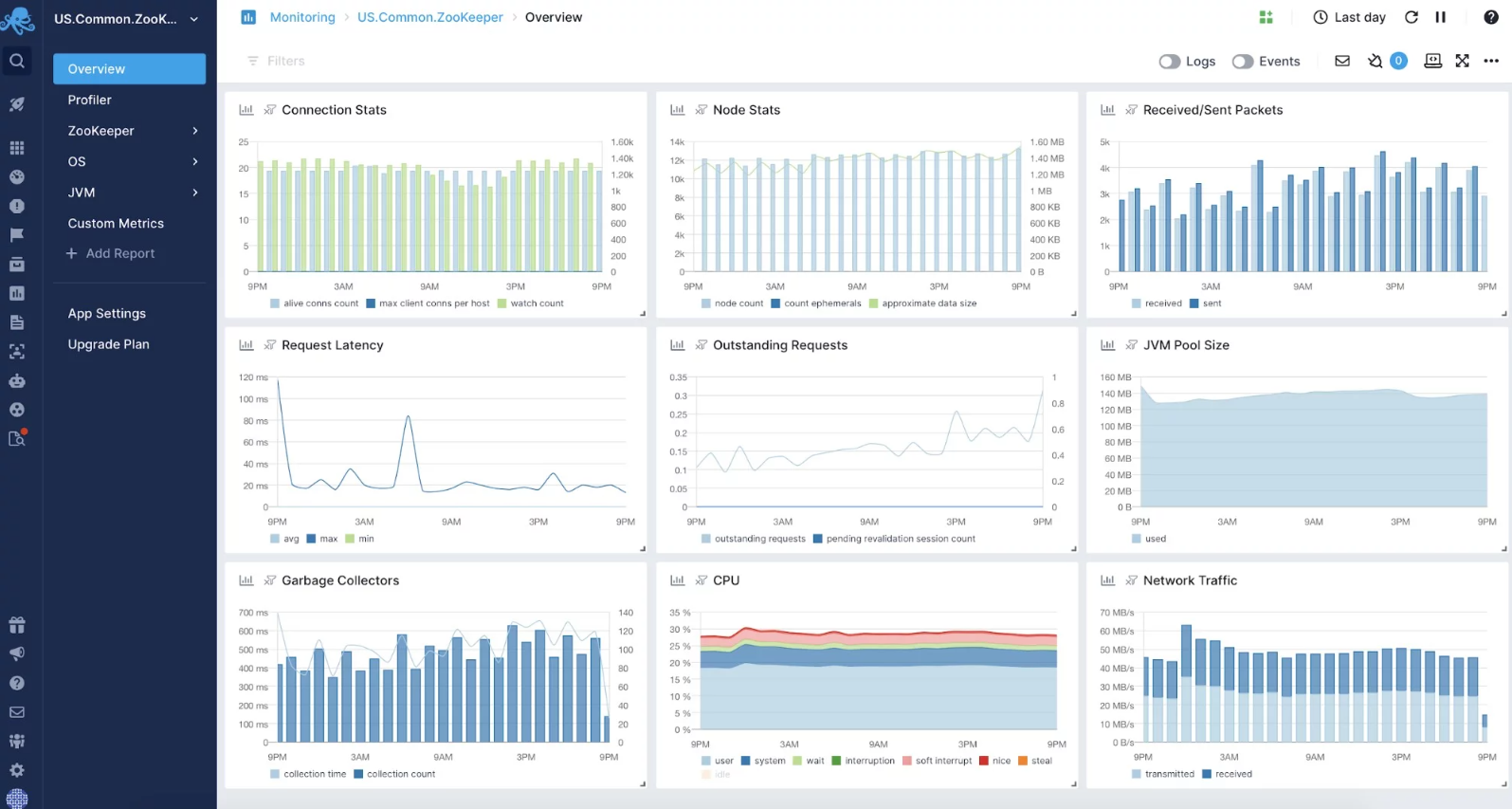KPIs for before and after cloud migration differ and should be chosen appropriately.
Measuring the success of your cloud migration, both during the process and after it's completed, can be a challenge. It's crucial to know which metrics to track so you don't waste resources, time, or money.
Think of KPIs as a scoreboard, giving you a snapshot of how your business is performing before and after the big move to the cloud. If you're an entrepreneur or an IT leader responsible for your business’s cloud migration from your on-premise IT setup, you'll want to pick the KPIs that you’ll track wisely to nail the perfect cloud migration plan.
To that end, we chatted with various small-business leaders to hear their stories, and they shared which KPIs they monitored to guarantee a smooth transition to the cloud for their businesses.
What is cloud migration?
Cloud migration is the process of moving data, applications, and other IT components from an on-premise environment or legacy infrastructure to the cloud. Essentially, you're taking everything or specific parts of your IT setup and relocating them to a cloud platform. Why? It offers flexibility, scalability, and often cost savings of cloud computing. Usually, IT professionals or specialized cloud service providers handle this transition to ensure everything goes off without a hitch.
KPIs to measure before and during your cloud migration journey
Track these KPIs before and during cloud migration to set realistic expectations, prevent unexpected downtime of your cloud infrastructure and data loss, and support smart decision-making for your business.
1. Keep track of migration duration
You need to track the duration of the migration to stay on course, efficiently manage resources, and keep your stakeholders informed. A report from the Scientific Research Publisher tells us that businesses without a defined time strategy have seen delays in their cloud migration projects.[1]
Key metrics to assess duration:
Projected completion time: Estimate the overall time needed for the migration, based on the size and complexity of the project.
Milestone deadlines: Set specific deadlines for each migration step using project management tools to track progress and ensure timely completion.
Actual time taken: Compare actual and projected completion times for each milestone using Gantt chart software to identify the scope of improvement for further cloud-related projects.
2. Minimize disruptions
When shifting to the cloud, disruptions are a major concern. A Next Pathway survey highlighted that one in three IT decision-makers are anxious about how migration could impact their critical apps. They fear issues such as longer response times to customers or even complete outages which can hinder business operations.
Meanwhile, 22% grapple with "application sprawl,"Key metrics to assess disruption:
Downtime incidents: Track the number and duration of unplanned downtime incidents during the migration, aiming to keep the number as low as possible. Various IT management tools can offer real-time updates and insights.
System performance: Check for response time and error rates, ensuring your applications' performance continues to meet predefined benchmarks during the migration.
Customer impact: Measure the effects of the migration on your customers, such as increased response times or reduced service quality, and address any negative impacts promptly.
3. Monitor migration budget costs
A Gartner report states that cloud migration costs can spiral out of control without proper planning and oversight.[2] Diligently track and manage your migration expenses to stay within budget, maximizing the return on your investment.
Key metrics to assess budget:
Estimated vs. actual expenses: Evaluate initial cost estimates against actual expenses in early migration stages, identifying discrepancies and opportunities for improvement in subsequent steps.
Cost of remediation: Track costs related to addressing disruptions and issues during the migration, such as data corruption and security breaches. To minimize these in future migrations, implement smart strategies beforehand, such as using backup software and risk management software.
KPIs to measure after cloud migration
After successfully migrating to the cloud, closely monitor KPIs that reveal the real impact of your move. Use these post-migration KPIs to understand the benefits and enhancements your business will enjoy. This will enable you to optimize your cloud environment further and ensure you maximize your investment.
1. Prioritize user experience
A smooth experience for employees and clients is crucial for cloud infrastructure success. Concentrate on user experience KPIs to pinpoint needed improvements and maximize your business's cloud potential.
Key metrics to measure user experience:
Employee Net Promoter Score (eNPS): Utilize employee engagement software to gauge your employees' satisfaction with the new cloud infrastructure. Regularly collect and analyze eNPS data to identify areas for improvement and ensure a seamless experience for your team.
Client Net Promoter Score (cNPS): Use a customer relationship management (CRM) platform to track and analyze your clients' satisfaction with the services and experiences provided through your cloud infrastructure. Keep an eye on cNPS trends to pinpoint areas that require attention and improvement.
Application response times: Monitor the responsiveness of your cloud-based applications, as slow performance, lag, jittery interactions, and long loading speeds can impact both employee and client satisfaction.
Support ticket volume: Keep track of the number and nature of support requests to identify recurring issues affecting user experience. Explore help desk softwares if you don't have one already.
"We're an employee-first company. So I look at my employees' experience with our completely cloud-based infra, and that's a key KPI for our startup. I'm always looking for a Net Promoter Score from the employees and the clients. Are my employees thriving, and are my clients satisfied? Those are my two things."


Jefferson McMillan
Founder of F&T Labs
2. Ensure data security
Data security is crucial after migrating to the cloud. Protect sensitive information to maintain customer trust and prevent unexpected fines for not adhering to industry standards.
Key metrics to measure data security:
Compliance with security standards: Ensure your cloud infrastructure adheres to industry-specific security standards, such as GDPR[4] (General Data Protection Regulation) and PCI DSS[5] (Payment Card Industry Data Security Standard).
Number of security incidents: Monitor the frequency and severity of security incidents such as data breaches or ransomware attacks to gauge the effectiveness of your security measures.
Febra Alexander[6], who runs an online pet shop in New York City, shares her strategy to measure this KPI:
"Post migration, we focus on ensuring that data is securely transferred and stored in the cloud. We work with our partners to conduct regular audits and penetration tests. This helps us identify any potential vulnerabilities and take steps to mitigate them."


Febra Alexander
Owner of Doggy Bag Treat
3. Maintain high performance
Monitor your cloud-based system's performance to guarantee optimal operation and user satisfaction. When the performance is good, it translates to quicker response times, efficient data processing, and overall smooth operation. However, a dip in performance can lead to user frustration, lost customers, or even a loss of revenue. To help mitigate these issues, use a cloud-based performance testing software to track the following KPIs and to make sure your applications are running as expected.
Key metrics to measure performance:
Load average: Track the average system loadServer uptime: Maintain a record of the percentage of time your cloud infrastructure is operational to minimize disruptions and guarantee service availability.
Febra[6] also shares her approach to tracking the performance KPI:
"We track performance metrics to ensure that our IT systems are running smoothly and efficiently in the new, cloud-based environment. For this, we use a combination of internal testing and feedback from our users to gauge how well our system is running in the cloud."
Febra Alexander
4. Track cost and time savings
Compare the time and costs that would be consumed using the traditional in-house IT infrastructure with the new, cloud-based infrastructure to evaluate the cost and time saved.
Key metrics to measure cost and time saved:
Monthly billing: Analyze your cloud provider's monthly billing to track expenses and identify unexpected charges or fluctuations.
Ongoing staff costs: Monitor the costs associated with staff managing your cloud infrastructure, including salaries, benefits, and training.
External costs: Track expenses related to external services or consulting fees associated with your cloud migration and management.
Total hardware costs saved: Calculate the reduction in hardware costs, including depreciation, maintenance, and energy consumption.
Annual replacement costs: Determine the savings from not replacing or upgrading in-house hardware, such as storage units and servers.
Time saved on maintenance tasks: Assess the time saved by your IT team on routine maintenance tasks now handled by your cloud provider.
Time saved on provisioning resources: Measure the reduction in time spent on provisioning and de-provisioning resources in the cloud compared to on-premise infrastructure.
5. Evaluate cloud migration's business impact
Evaluate the overall business impact of your cloud migration to determine whether your investment in cloud technology is paying off and driving your business forward. Monitor various aspects of your business to identify areas of improvement and growth.
Key metrics to measure business impact:
Number of project orders: Track the volume of project or product orders received or customer leads generated post-migration to measure the effectiveness of your cloud infrastructure in supporting your business processes.
User engagement rate: Monitor user engagement with your website, such as time spent on the site, pages per visit, and conversions, to determine the impact of cloud migration on your online presence.
Bounce rate: Analyze the percentage of single-page visits or visitors who leave your site quickly, especially on crucial pages such as your services page, to identify any issues with user experience or site performance.
Conversion percentage: Measure the rate at which your website visitors convert into customers, sign up for services, or complete other desired actions, to assess the effectiveness of your cloud infrastructure in driving business growth.
Cart abandonment rate: If you run an online selling store, track the percentage of abandoned shopping carts before the purchase is completed to identify potential issues with your eCommerce platform or user experience in the cloud environment.
Measuring cloud migration KPIs is a breeze when you know where to look
Leo Ye[7], the founder of CUBO, shares his secret to measuring all the KPIs effectively together:
"Our only secret is using cloud management software. It has built-in abilities to automate data collection and analysis, provide real-time visibility into cloud resources, and assist in identifying opportunities for improvement. It has taken so much load off my team's plate. I collaborate every week with my techies to measure all the KPIs, and this cloud management tool saves us hours."


Leo Ye
Founder of CUBO

An example of a cloud management software providing in-depth visibility into IT infrastructure (Source)
Leo added that relying on the IT operations and management staff can also be an effective strategy, especially for smaller firms with fewer resources, just like Jefferson McMillan [6] said they ask their teammates and employees when gauging the migration success.
These are just a few ways small businesses track KPIs. If the situation seems overwhelming, and you feel unsure where to start, consider exploring cloud consulting services. These professionals can help optimize your cloud infrastructure for cost and performance and provide tailored guidance for your business needs during and after the cloud migration.
Want to learn more about cloud computing? Check these resources:
Note: The screenshots of applications included in this article are examples to show a feature in context and are not intended as endorsements or recommendations.

